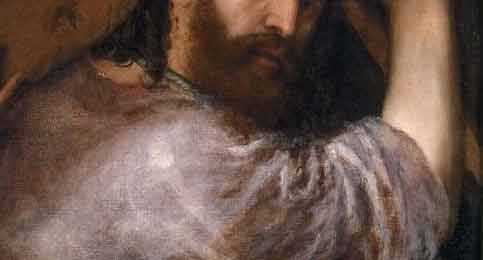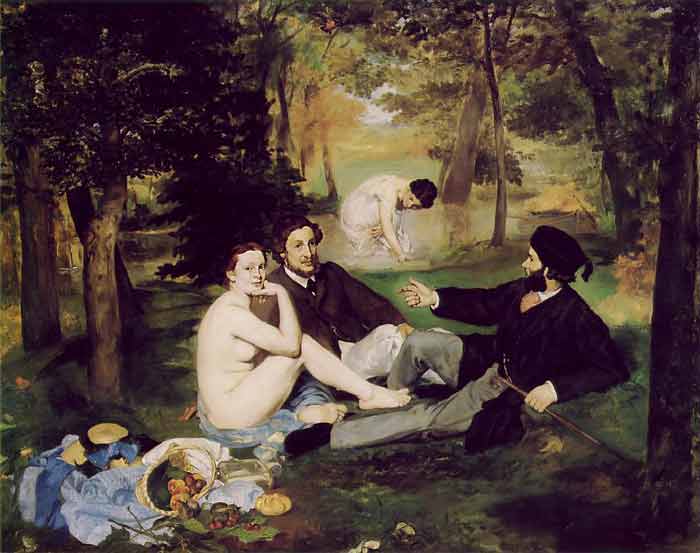On 28 Jun, 2015 With
Clothed female, naked male in Art Clothed female, naked (or nude) male is a genre of erotica featuring one or more nude men and one or more clothed women. In classical antiquity, the portrayal of nude male form in art (including the exposure of genitals) was considered to be more acceptable than that of the naked female form. This can be seen in the comparative portrayal of the classical theme of Perseus and Andromeda. In a wall painting of ancient Pompeii, Perseus is nude while Andromeda is fully clothed. By the renaissance, this view had reversed. For example, in Titian’s treatment of Perseus and Andromeda in mid-1550s, however, it is Andromeda who is nude – save for the barest wisp of fabric – while Perseus is clothed in armour. Depictions of…
Read More
On 1 Jul, 2014 With
“Glazing” in relation to the Venetian Method refers to the application of a darker transparent paint over a lighter area. Doing so causes light rays to pass through a transparent darker layer, bouncing off the lighter surface underneath, then returning to the viewer’s eyes, and was useful in creating subtle optical illusions. Only the Renaissance practice of glazing can produce this particular effect, one which results in the look of a warm glow and more saturated colours than the same pigment could achieve if applied more thickly and opaquely. Modern methods, with their more opaque results, lose a sense of distance when one is looking at shadows. Rembrandt’s glowing and rich dark browns owe their origins to this Venetian…
Read More
On 16 Nov, 2011 With
Clothed male, naked female in Art Clothed male, naked (or nude) female (on the internet sometimes abbreviated to CMNF) is a genre of erotica featuring one or more nude women and one or more clothed men. Such a scenario is described as a sexual fantasy by some men and some women. A common (but not essential) feature of such fantasy scenarios is that the woman’s one-sided nudity portrays the woman’s sense of vulnerability and humiliation in relation to the clothed man. One-sided female nudity can occur in actuality when a woman disrobes for the sexual pleasure of a man or other men, such as in a BDSM, sexual roleplay or other sexual activity, as an indication of sexual submission. Some…
Read More
On 4 Mar, 2011 With
Art Terms: Trompe-l’œil Trompe-l’œil, which can also be spelled without the hyphen in English as trompe l’oeil, French for ‘deceive the eye’ is an art technique involving extremely realistic imagery in order to create the optical illusion that the depicted objects appear in three dimensions. History in painting Although the phrase has its origin in the Baroque period, when it refers to perspectival illusionism, use of trompe-l’œil dates back much further. It was (and is) often employed in murals. Instances from Greek and Roman times are known, for instance in Pompeii. A typical trompe-l’œil mural might depict a window, door, or hallway, intended to suggest a larger room. A version of an oft-told ancient Greek story concerns a contest between…
Read More
On 16 Feb, 2011 With
Art Terms: Vellum Vellum (from the Old French Vélin, for “calfskin”) is mammal skin prepared for writing or printing on, to produce single pages, scrolls, codices or books. It is generally smooth and durable, although there are great variations depending on preparation, the quality of the skin and the type of animal used. The manufacture involves the cleaning, bleaching, stretching on a frame, and scraping of the skin with a hemispherical knife. To create tension, scraping is alternated by wetting and drying. A final finish may be achieved by abrading the surface with pumice, and treating with a preparation of lime or chalk to make it accept writing or printing ink. Modern “paper vellum” (vegetable vellum) is used for a…
Read More
On 10 Feb, 2011 With
Art Terms: Underpainting In art, an underpainting is an initial layer of paint applied to a ground, which serves as a base for subsequent layers of paint. Underpaintings are often monochromatic and help to define colour values for later painting. There are several different types of underpainting, such as verdaccio and grisaille. Underpainting gets its name because it is painting that is intended to be painted over (see overpainting) in a system of working in layers. There is a popular misconception that underpainting should be monochromatic, perhaps in gray-scales. In fact, a multi-color underpainting is much more useful and was used extensively by artists such as Giotto (whose technique is described in detail by Cennino Cennini), as well as by…
Read More
On 7 Feb, 2011 With
Art Terms: Brunaille A Brunaille is a painting executed entirely or primarily in shades of brown. Such a painting is described as having been painted “en brunaille“. Brunaille has its roots in 12th century stained glass made for Cistercian monasteries which in 1134 prohibited the use of color in their art. However, it was only in the early 17th century that the French term “brunaille” was coined to describe pictures painted in shades of brown. Brunaille are less common than paintings executed in grey (grisaille).
Read More
On 12 Jan, 2011 With
Art Terms: Grisaille Grisaille is a term for painting executed entirely in monochrome or near-monochrome, usually in shades of grey. It is particularly used in large decorative schemes in imitation of sculpture. Many grisailles in fact include a slightly wider colour range, like the Andrea del Sarto fresco illustrated. Paintings executed in brown are sometimes referred to by the more specific term brunaille, and paintings executed in green are sometimes called verdaille. A grisaille may be executed for its own sake, as underpainting for an oil painting (in preparation for glazing layers of colour over it), or as a model for an engraver to work from. “Rubens and his school sometimes use monochrome techniques in sketching compositions for engravers.” Full…
Read More




